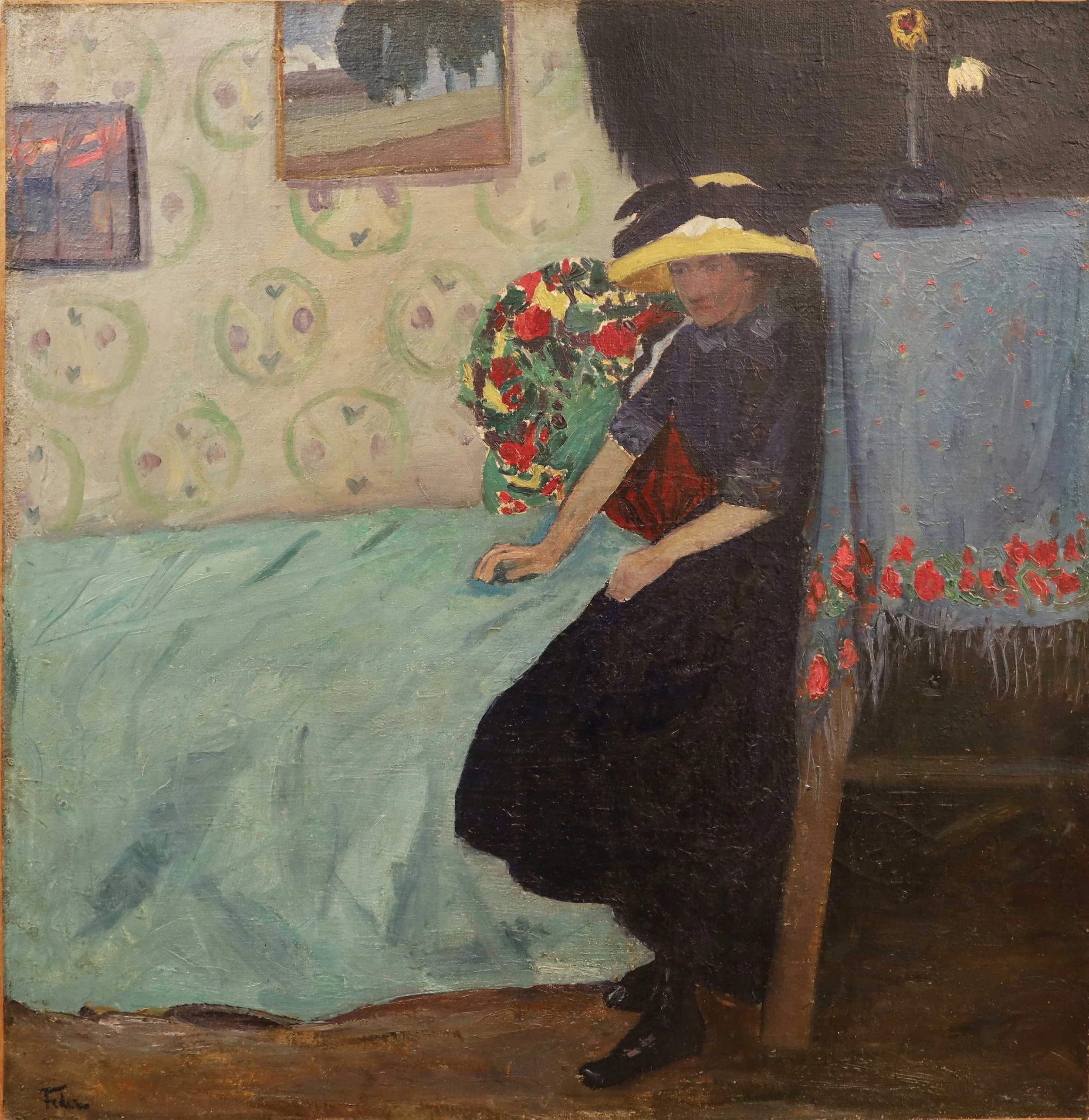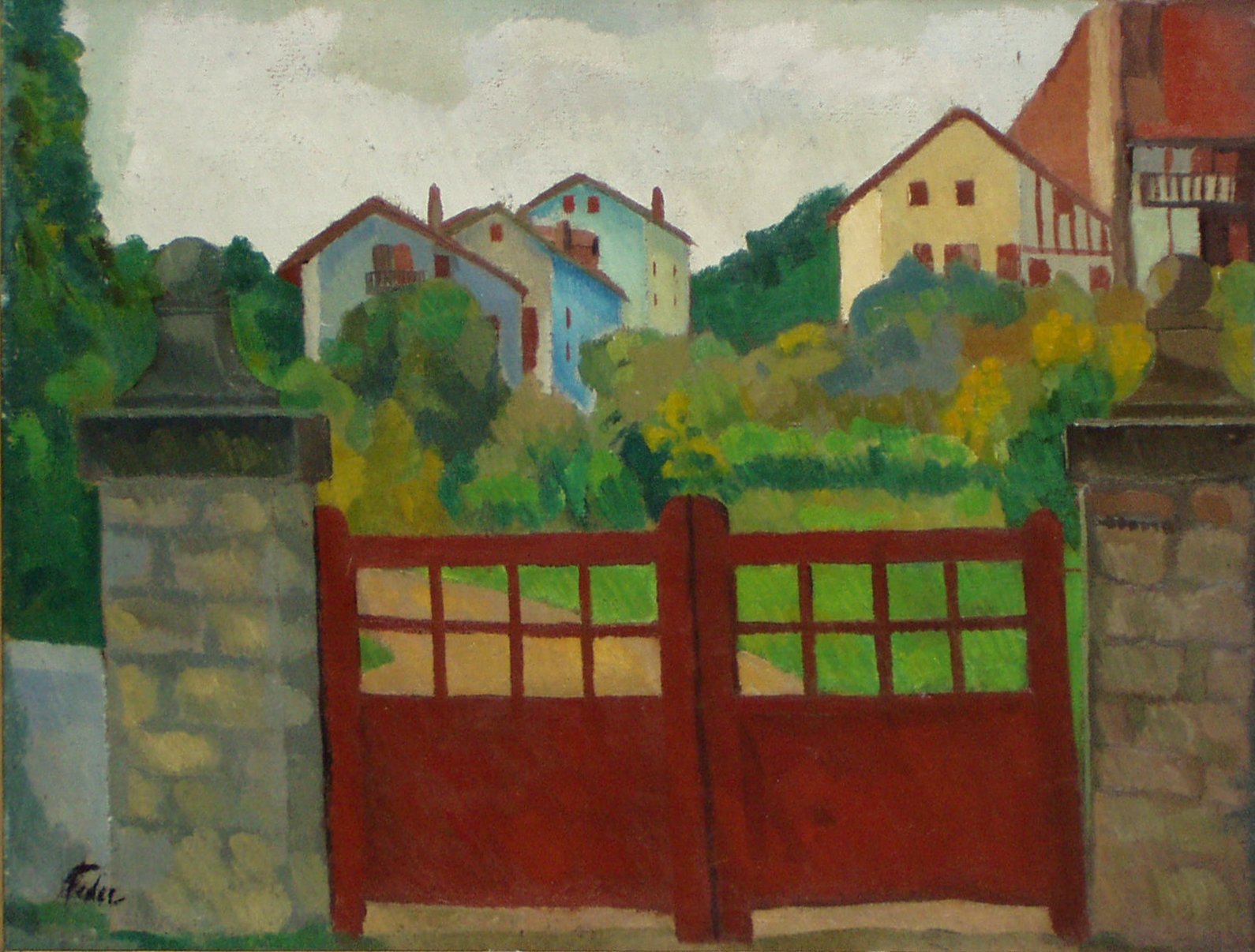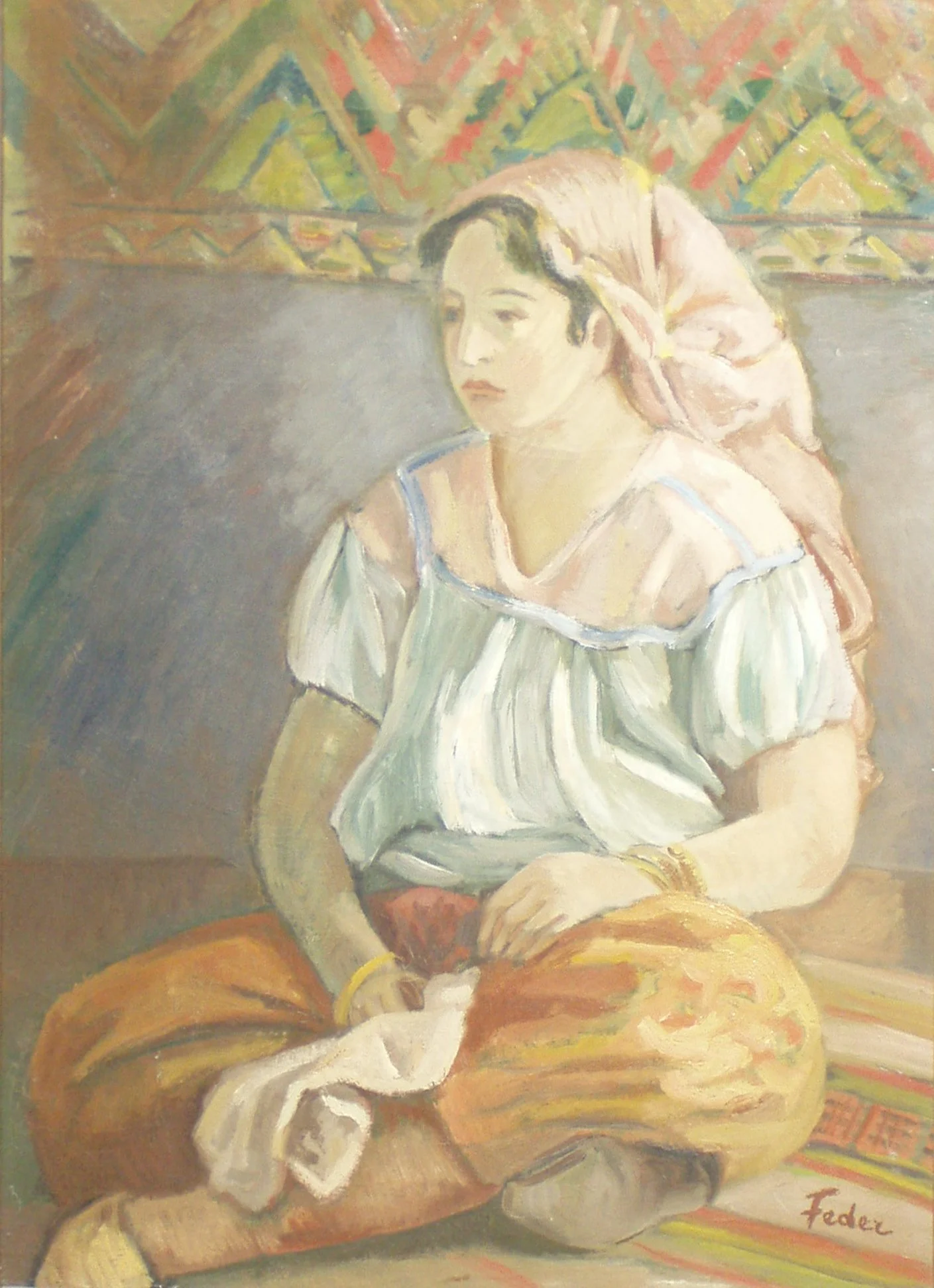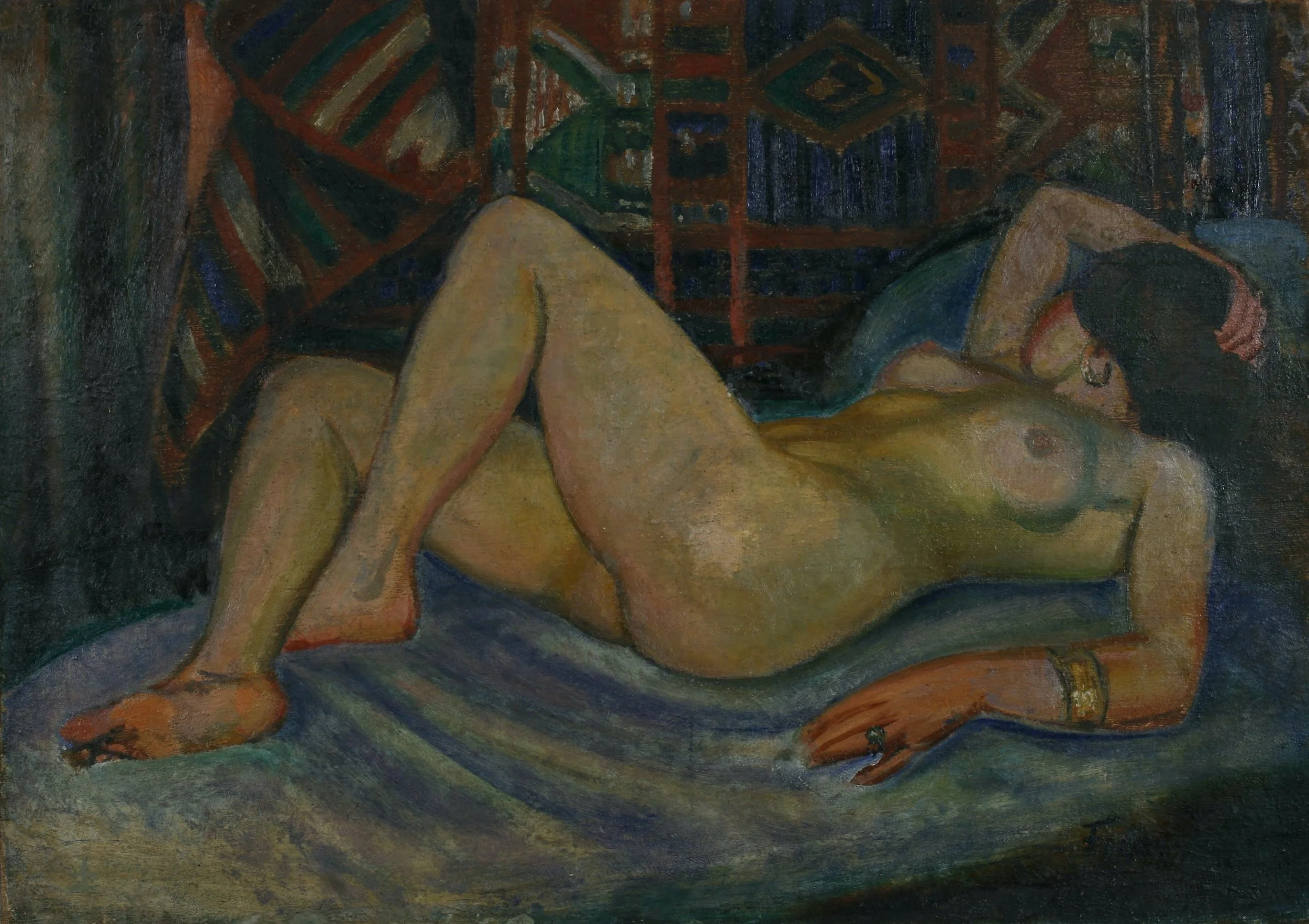Adolphe Feder (Jewish-Ukrainian, 1885-1943)
Biography
Adolphe Feder was a Jewish-Ukrainian painter and illustrator from Odesa. In his early life he lived in Berlin and Geneva, but finally resided in Paris and enrolled at the Academie Julian in 1908. Adolphe studied painting and worked closely with Henri Matisse in his studio.
In 1924 Adolphe Feder travelled to Palestine and Algeria. The painter enjoyed travelling and his trips to North Africa and the Middle East had a profound influence on his style. Upon his return to Paris, Feder's colour palette becomes more muted and forms more elaborate. Several paintings executed during and after his travels earned him recognition in the Parisian artistic community. He was a dedicated member of the Russian Artists Association, which also included Mikhail Larionov, Ossip Zadkine, and brought together Russian artists living in La Ruche. From 1920 to 1928 Feder actively exhibited and was the subject of many one-man shows in Parisian galleries. In 1931 Adolphe Feder decorated the pavilions of Madagascar and Palestine during the International Colonial Exhibition.
During the Nazi occupation, Feder remained in Paris where he and his wife were imprisoned and sent to Drancy internment camp in 1942. Adolphe Feder continued to paint, his new subjects being his fellow prisoners and the guards. He was deported from Drancy to Auschwitz in February 1943. His wife Sima escaped from Drancy and rescued some of the works that Feder painted while in imprisonment.
Since the artist's death, he has been included in many group exhibitions, mainly alongside École de Paris artists, Jewish and Russian artists in Paris, and 20th-century artists who have lost their lives in the Holocaust.
Adolphe Feder’s works are included in the collection of the Museum of Modern Art (Paris), Brussels, Grenoble, Petit Palais (Geneva), Ghetto Fighters' House Museum (Galilee), Hecht Museum (Haïfa).
Related artists
Max Band / Pinchus Kremegne / Alfred Aberdam / Henri Epstein / Joseph Pressmane / Emmanuel Mané-Katz / Alexandre Fasini / Alexandre Altmann
Available works
Please see below the selection of available original artworks by Adolphe Feder.
Adolphe Feder, Interior with a woman. Oil on canvas. 100 by 100 cm.
Adolphe Feder, Embankment. Oil on canvas. 92 by 72 cm.
Adolphe Feder, Landscape, house in the trees, 1930s. Oil on canvas. 65 by 54 cm.
Adolphe Feder. Landscape with red gates, 1918. Oil on canvas. 50 by 65 cm.
Adolphe Feder, Portrait of a woman, 1930s. Oil on canvas. 73 by 54 cm.
Adolphe Feder, Reclining Nude, 1920s. Oil on canvas. 65 by 92,5 cm.
Adolphe Feder, Still life with Japanese doll, 1930s. Oil on canvas. 82 by 65 cm.
Adolphe Feder, Flowers. Oil on canvas. 50,5 by 61,5 cm.









